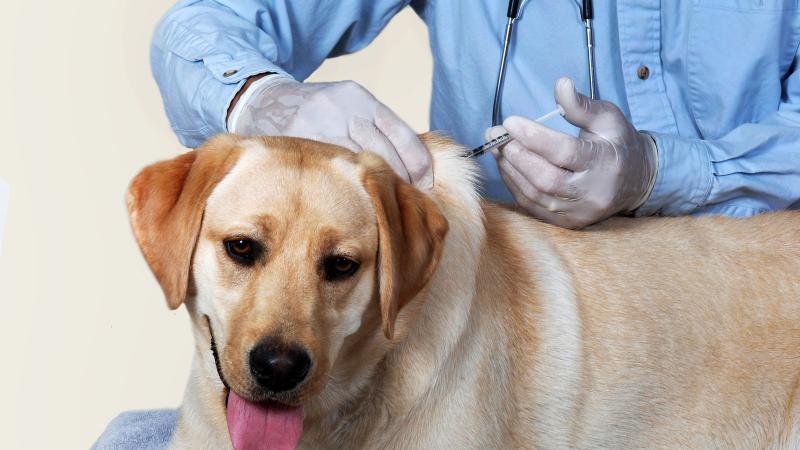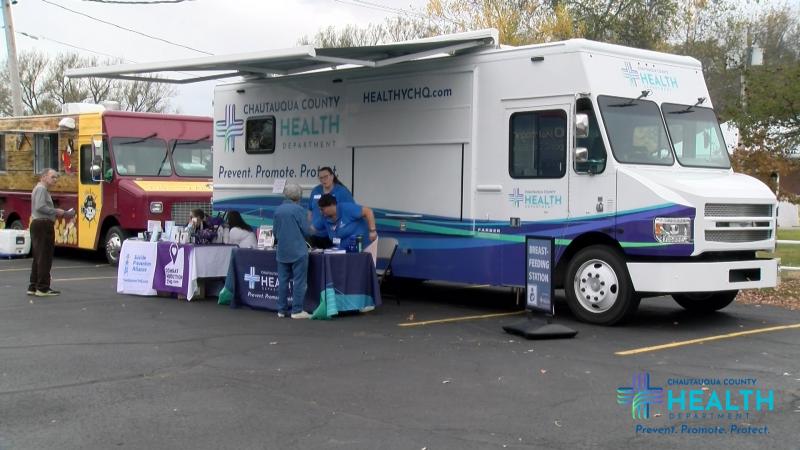
MAYVILLE, NY – The Chautauqua County Health Department (CCHD) encourages residents and visitors to protect themselves by being aware of the risks of potential exposure to rabies from wildlife and what to do if they are exposed. The most common way people and animals are exposed to the rabies virus is through an infected animal’s saliva. In the event of a possible exposure, seek medical attention and contact the CCHD’s Environmental Health Division to discuss the specific situation.
According to Chautauqua County’s Chief Medical Officer, Michael Faulk, M.D. “Rabies is a life threatening virus but post exposure treatment is very effective if used correctly.”
Only mammals can transmit the rabies virus, so animals like birds, snakes, and fish do not pose a risk for rabies. A mammal is an animal that breathes air, has a backbone, and grows hair at some point during its life. Rabies is more commonly found in mammals like raccoons, opossum, bats, and fox, however any mammal has the potential to transmit the virus.
Protect People and Pets from Rabies Exposure:
- Do not feed wild or stray animals and discourage them from seeking food near your home by keeping garbage cans tightly covered. One of the most common reasons for emergency department visits requiring post exposure treatment is when adults or children attempt to pet or feed unknown cats or other friendly appearing domestic animals.
- Do not approach or handle any unknown wild or domestic animal. If you find an injured animal, or have questions about what to do when you encounter wildlife please refer to the New York State Department of Environmental Conservation website at: https://dec.ny.gov/nature/wildlife-health.
- Teach children to never approach any unfamiliar animal, even if the animal appears friendly, and to tell an adult immediately if they are bitten or scratched.
- Wash any animal bites and scratches immediately with soap and water and contact your health care provider immediately. Call the Health Department to evaluate your risk of rabies exposure, including whether rabies post-exposure treatment is recommended.
- Keep your pet's rabies and distemper vaccinations up-to-date.
“Please remember that all dogs, cats, and ferrets should be vaccinated against rabies,” states CCHD’s Director of Environmental Health, Jessica Wuerstle. “Vaccinated pets who catch a bat may require a booster shot after exposure, but they will be fine. Pets that haven’t received pre-exposure rabies vaccine are at risk for catching rabies. While vaccination is especially important for pets who spend time outdoors, it is also important for indoor animals because bats tend to find ways into homes.”
Bats are an important part of the natural world and help control insect populations when they are outdoors. Seeing bats outside is common and normal, especially at dusk and through the night. Avoid contact with bats outside by using screens, tents, or mosquito netting. Keep bats out of homes by sealing small openings and making sure there are well fitting screens on any doors or windows that are left open. If people or pets have had physical contact with a bat, the bat should be captured and may need to be sent for rabies testing. Contact the Health Department for guidance.
What to do if you find a bat in your home?
- If you are awake and suddenly see a bat in your home: Avoid physical contact with the bat and let the bat escape through an open window or trap it with a container so you can release it outside.
- If you are sleeping and wake up to a bat in your home: If there is any chance the bat may have come in contact with you while you were sleeping or with other people in the home who may be sleeping in rooms with open doors, the bat should be captured for possible rabies testing. Testing the bat will help determine if rabies post exposure treatment is necessary.
Professional animal control companies may be able to assist you with bat removal. Health Department staff are not able to assist with capturing bats or other wildlife. If professional assistance is not available, safely capture the bat as described below.
If you need to capture a bat:
- Find a container like a box or a can large enough for the bat to fit in, and a piece of cardboard large enough to cover the container opening. Punch small air holes in the cardboard.
- Put on heavy duty work gloves. When the bat lands, approach it slowly and place the container over it. Slide the cardboard under the container to trap the bat inside.
- Tape the cardboard to the container to secure the bat inside. Contact the Health Department to see if the bat should be tested for rabies.
- If the bat is killed, it must be stored on ice to preserve the animal for testing.
More information:
- General rabies: https://www.health.ny.gov/diseases/communicable/zoonoses/rabies/
- Rabies and bats: https://www.health.ny.gov/diseases/communicable/zoonoses/rabies/bats/
- For questions please call the Chautauqua County Health Department at 716-753-4481.
About Chautauqua County Health Department - The Chautauqua County Health Department is the leading Public Health organization in Chautauqua County dedicated to the support of the community’s health. The Health Department takes innovative approaches to provide technical assistance to partner organizations, and offers various programs and services in order to help prevent disease, protect the public’s health and promote our community’s overall health and wellness. For more information visit www.HealthyCHQ.com.







